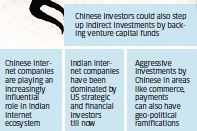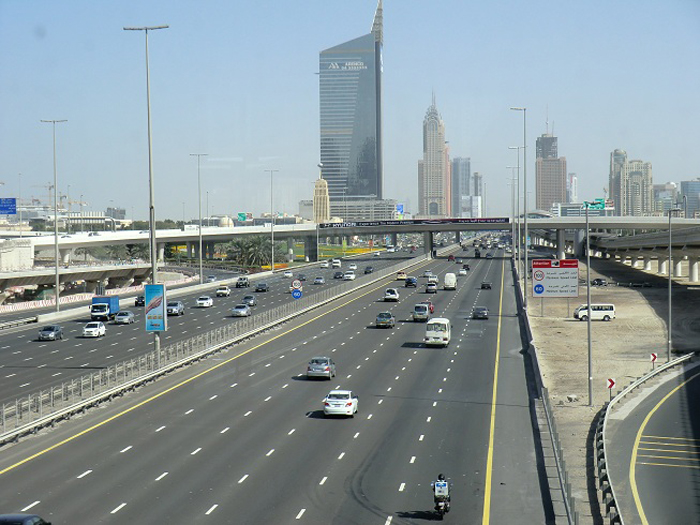India is new battlefield for Chinese and American investors
NEW DELHI: When Nasdaq-listed MakeMyTrip, one of Indian internet first success stories, was looking to build a war chest recently, several events were playing out in parallel.
Rival online travel agency Goibibo, backed by the deep-pocketed South African media group Naspers, were discounting heavily and budget hotels aggregator Oyo Rooms was on the verge of overtaking the 16-year-old company's valuation. MakeMyTrip did something unconventional: It looked eastward to its larger peer in
China instead of hitting up
private equity funds in the West.
Last month, the company announced a $180-million ( Rs 1223.1 cr) investment from China's largest online travel firm Ctrip. "We believe MakeMyTrip and Ctrip can help each other to remain leaders in our respective markets by sharing wisdom and perhaps a few battle scars as well-earned along the way," MakeMyTrip's CEO Deep Kalra said on an analyst call on January 29. Given that MakeMyTrip is valued at about $645 million and Ctrip at $15 billion, it is clear who will be the bigger brother in this relationship.
Abhishek Bansal, founder of hyper-local logistics startup Shadowfax, was in China for a week in November to meet investors and understand how the online-tooffline market had evolved there. "Chinese investors have seen market trends and potential in O2O, so the confidence they show about it is much different as compared to
Silicon Valley," said Bansal, 26, who previously worked in China as a consultant for about a year.
Both decisions underline the increasing importance of Chinese companies and the yuan—even if it's depreciating— to the Indian internet and technology ecosystem, which until now has been dominated by American dollars. (1 yuan is Rs 10.4) In a new-age revival of sorts of ancient trade relations between the two neighbours, Chinese internet giants Baidu, Alibaba and Tencent—collectively known as BAT—have been aggressively scouting in India the past year for startups to invest in.
Tencent and Alibaba have started investing, and Baidu is searching for deals. On the surface, a theme of Indo-China brotherhood is playing out across India's largest internet segments: Online retail (Foxconn and Alibaba Group have invested in Snapdeal), cab-hailing (Ola is a partner in Didi Kuaidi's global efforts targeting Uber) and digital wallet (Alipay has invested in Paytm).

The underlying theme, though, is more likely that of India being employed as a battleground for Chinese and American internet companies, according to some industry experts. "It's good that the Chinese are here. We see them as potential future acquirers of our portfolio companies," said TC Meenakshisundaram, managing director at IDG Ventures India, which has an affiliate in China. "Whether an (Indian) company will win, a US company will win, or a China-backed Indian company will win is yet to be seen." Sequoia Capital, Matrix Partners India, Accel Partners and SAIF Partners, too, have China affiliates. Investors at these firms keep tabs on what business models work in China before deciding on backing local versions. Sequoia Capital invested in logistics startup RoadRunnr last year after seeing the success of a similar portfolio company in China, Dada, which is now valued at over $1 billion.
"Increasingly, we are looking at China rather than the US (for comparable companies). Generally, pattern recognition is very important for investors," said Sasha Mirchandani, founder of early-stage investment firm Kae Capital. Indian entrepreneurs find Chinese strategic investors steady and detail oriented.
That's unlike American and Japanese investors who poured billions of dollars into Indian online retailers after Alibaba's blockbuster IPO in 2014, expecting similar mega returns given the parallels in the demographics of the two Asian economic giants, but that strategy is threatening to backfire in many cases. Also, the nature of Chinese capital flowing into Indian internet companies is more strategic as compared to a large chunk of American dollars that come as financial
investments in billion-dollar companies like Flipkart and Ola.
"The VCs in China are not coming to India. It is the large conglomerates that are coming here. They have the knowledge of building very successful consumer businesses, something that no VC can give," said Sanat Rao, M&A adviser at software product think tank iSPIRT. This is different from US companies like Uber and Amazon that are looking to topple local rivals, and Facebook and Google that are eyeing more advertising dollars from their growing internet base in India with direct operations in the country.
Chinese internet companies are not buying majority stakes in Indian companies or setting up direct operations because of possible political ramifications, according to several experts, given the decades-long fractious relations between the two countries.
Venture capital firms said that with growth slowing in China, there's potential for not only strategic interest but also for investment from Chinese family offices to flow into India.
Praveen Chakravarty, a fellow in political
economy at IDFC Institute, said many technology and internet companies tend to be natural monopolies with a winner-takes-all structure, and so the
Indian government should keep watch on how much commerce is being driven by Indian internet companies backed or controlled by Chinese strategic investors. "Monopolies are generally bad from a market perspective, and there will be larger geo-political implications if monopolies are seen to be controlled by vested interests," said Chakravarty, also a co-founder of Mumbai Angels and one of India's earliest angel investors.
Some mid-sized Chinese companies have found a strong customer base in India and are setting up direct operations in the country. "India is the biggest growth engine for the next 5 years. We want to make friends here," said Alex Yao, senior vice president at Chinese mobile internet firm Cheetah Mobile.
Expanding partnerships with original equipment makers in India, investing in local companies and striking content partnership deals here are key priorities, he said. The firm, which has invested in domestic wearable fitness startup GOQii, plans to establish an investment team in India.
Its Chinese peer, APUS Group, has also outlined plans to invest Rs 300 crore in Indian startups. Branded Chinese consumer electronics makers are not far behind. Leshi Internet Information and Technology, also called Letv, is one of the largest video companies in China. It recently tied up with India's Yupp TV and B4U Music and launched its smartphone exclusively on Flipkart for the domestic market.
The company has defined seven sub-ecosystems—mobile, TV, e-vehicles,
sports, music, content, internet finance— to be replicated in India. However, time will tell if Indian startups will only dance to tune of the Chinese dragons, or do more to stay relevant in the Indian market.













